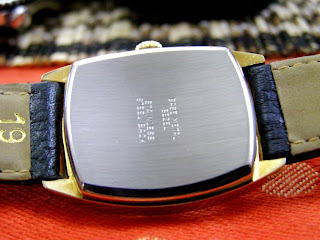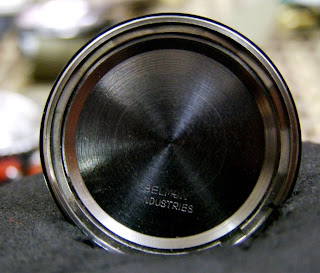Citizen Holdings Co., Ltd. (シチズンホールディングス株式会社, Shichizun Hōrudingusu Kabushiki-gaisha) is the core company of a Japanese global corporate group based in Tokyo Japan. The company was originally founded as Shokosha Watch Research Institute in 1918 and is currently known as the manufacturer of CINCOM precision lathe machine tools as well as CITIZEN watches. The trade name originated from a pocket watch CITIZEN sold in 1924. It is one of the world's largest producers of watches. For almost eight decades, Citizen has been ahead of its time. Citizen brand has always stood for innovations and high precision that make life better for everyday people and now they are raising their sights to meet the needs of the new Millennium.
In 1924, when Citizen's forerunner, the Shokosha Watch Research Watch Institute produced its first pocket watch the "CITIZEN". The then Mayor of Tokyo, Mr Shimpei Goto, named the watch "CITIZEN" with the hope that the watch, a luxury item of those times, would become widely available to ordinary citizens and be sold throughout the world.
Time and again Citizen has pioneered groundbreaking technologies and helped to make watches an indispensable part of modern life. Introduced in 1956, Parashock was the first shock resistant watch made by a Japanese manufacturer. And three years later, Parawater was hailed as the country's first water resistant watch.
One of the latest milestones is our Eco-Drive system. Bringing new thinking to the art of watchmaking, this is a light powered solution that eliminates the need to change batteries - a revolution that made it the first watch technology to receive the Japan Environment Association's Eco Mark for environmentally friendly products.
And in 2003, Citizen continues to evolve and be ahead of its time with the launch of Stiletto. This is the World's thinnest light powered watch - a watch so revolutionary it combines eco-drive technology with a refined, sleek and sophisticated case and bracelet from 4.4mm thick.
Citizen is, however more diverse then simply watches. In fact watches only represent less than 40% of the company's business. Today Citizen is drawing on a heritage of proven quality and technologies as we develop the market for watches, clocks, jewellery, eyeglass frames and health care products.
BRIEF INFORMATION ON RARE COLLECTION OF CITIZEN LEOPARD HI-BEAT
Some 40 years ago, as the 1960's drew to a close, the development of Citizen's automatic wrist watches was reaching its peak, in terms of both range and quality. Around the middle of that decade the company switched from it's geared 'jet' rotor design to the more reliable and widely used oscillating weight type, and the late '60's saw the launch of the Chrono Master high grade automatic alongside a range of other new models.
In 1969 Citizen launched the evocatively named Leopard line, based on the 7200 calibre. Although this movement was used in other models, the Leopards were distinguished by one key characteristic not to be found in the others – they were all high-beat, running at either 28,800 beats per hour (bph) or 36,000bph. These were Citizen's first watches to run at these speeds, reflecting the quality and reliability they could achieve by that time. These fine movements also all feature a micro adjuster on the balance to assist with accurate regulation.
In a relatively short space of time the Leopard line offered an extensive range of watches, with different jeweling, styles and price points, and can perhaps be best described as 'upper mid' to 'high' grade pieces.
Besides the high-beat common denominator, the Leopards are also characterized by their jewel counts, which are always even numbers – i.e. 28, 26, 24, and later in the production run, 22. Other models using the same base movement usually carry odd number jewel counts, for example the Custom V2 and Seven Star V2, with jewel counts of 25, 23, and 21 (the only exception to this I can identify is calibre 7790, running at 21,600bph with 22, 24 and 26 jewels).
The production run of the Leopards was short-lived – just as the development of mechanical watches was reaching new heights, the introduction of the much more accurate and soon the much cheaper quartz module in the early to mid-1970's brought that development to a halt. The latest Leopard movements entered the market in 1971, just two years after the first model was introduced.
(This articles on Citizen Leopard was brilliantly written by Mr Stephen Netherwood, who has made a lot of research about this watch. His original article on this Citizen Leopard can be viewed at http://seikoholics.yuku.com/sreply/344/Citizen-Leopard)
























































